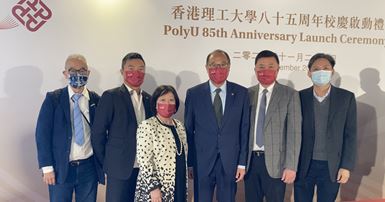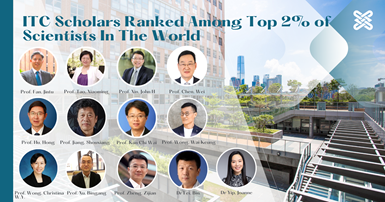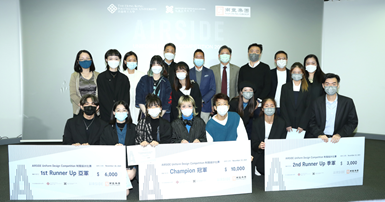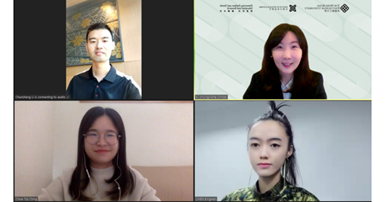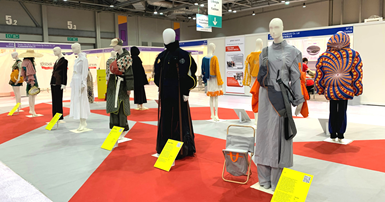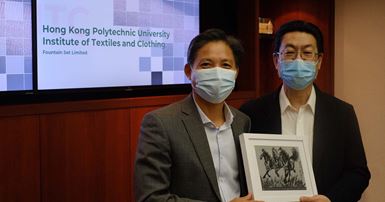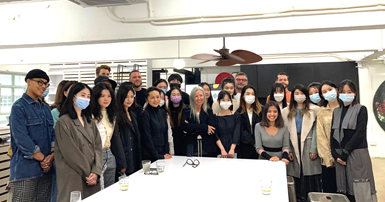Dr Dahua Shou and colleagues advance liquid engineering and publish in impactful journals
Dr Dahua Shou and his colleagues recently published a research article entitled “An All-Fabric Droplet-Based Energy Harvester with Topology Optimization” on intelligent wearables in the Advanced Energy Materials (IF: 29.368) journal, and a review paper entitled “Heterogeneously engineered porous materials and structures for directional and asymmetric liquid transport” on tunable liquid transport in Cell Reports Physical Science (a premium journal published by Cell Press which publishes cutting-edge research across the physical sciences, including chemistry, physics, materials science, energy science, engineering, and related interdisciplinary work).
Dr Shou’s team has developed a novel all-fabric, droplet-based electricity generator. The topology-optimised droplet energy harvesting fabric (TO-DEHF) enables stable and efficient output from randomly falling droplets. TO-DEHF has high flexibility and breathability, based on which a self-powered wireless wearable prototype has been successfully realised for monitoring crucial droplet properties, including temperature, pH and salinity. It has recently been reported that the output power density of a triboelectric nanogenerator can be enhanced by several orders of magnitude by using a field-effect-transistor-like structure. However, previously reported strip top electrodes are not ideal for optimum generation and stable transfer of charges under practical dynamic conditions. Switched on by an impinged droplet, the bridged closed-loop electric circuit transfers the accumulated charges by converting the conventional interfacial effect into a bulk effect. Randomly falling droplets cannot always exactly impinge the electrode with the desired spreading contact to achieve a high peak voltage, and a large fraction of low-voltage direct-contact and sliding-contact modes will lead to low output and instability. To address this critical challenge, the proposed TO-DEHF with the optimised fabric electrodes in a hexagonal network feature a stable open-circuit voltage under moving and rotating patterns, 3-fold that with strip electrodes. The peak power density of the TO-DEHF (71.8 mW/m2) is 4.8-fold that of the latter (14.8 mW/m2).
In the meantime, Dr Shou has comprehensively reviewed the latest progresses in advanced textiles for controllable liquid transport. Passive regulation of dynamic liquid transport in porous media in a directional or asymmetric manner has become increasingly critical to emerging applications such as personal moisture management, water harvesting, and liquid separation. Over the past decade, heterogeneously engineered porous materials and structures for tunable liquid transport have stimulated a remarkable amount of attention and triggered technological revolutions in those areas based on nature-inspired designs, metamaterial developments, and model-driven optimisation. Herein, Dr Shou and his colleagues provide an overview of the latest developments in directional and asymmetric liquid movements created by material and structural heterogeneities, with a focus on mechanistic models, physical mechanisms, and engineering strategies to provide a better understanding of controllability in directed liquid motion. The diverse implementations and applications with improved fluid directionality and asymmetry, from an overview of the fabrication methods to analyses of the significant influential factors, have been discussed. Current challenges and research gaps are summarised, in order to provide a road map for potential research opportunities.
Research studies of liquid engineering based on advanced textiles and intelligent wearables by Dr Shou and his colleagues have also been published in other impactful journals, including Advanced Functional Materials in 2018 (IF: 18.808); Science Advances (IF: 14.136) in 2020; and a series of prestigious mechanics journals including Physical Review E (2), Applied Physics Letters (1), Langmuir (3), and International Journal of Heat and Mass Transfer (3) from 2011 to 2020. He has been awarded Vebleo Fellow and delivered a keynote talk entitled “Smart Textiles and Wearables for Thermal Comfort and Energy Saving" for the Vebleo community.
References:
Fei Liang1, Xujiang Chao1, Shudong Yu, Yuheng Gu, Xiaohui Zhang, Xin Wei, Jintu Fan, Xiao-ming Tao and Dahua Shou*, An All-Fabric Droplet-Based Energy Harvester with Topology Optimization, Advanced Energy Materials, 2021: 202102991.
Guanghan Huang, Xin Wei, Yuheng Gu, Zhanxiao Kang, Lihong Lao, Li Li, Jintu Fan and Dahua Shou*, Heterogeneously engineered porous media for directional and asymmetric liquid transport, Cell Reports Physical Science, 2021.


